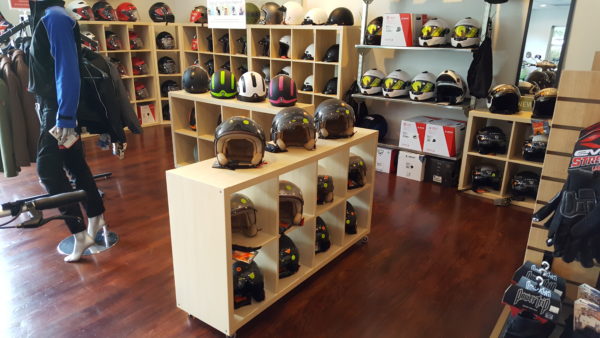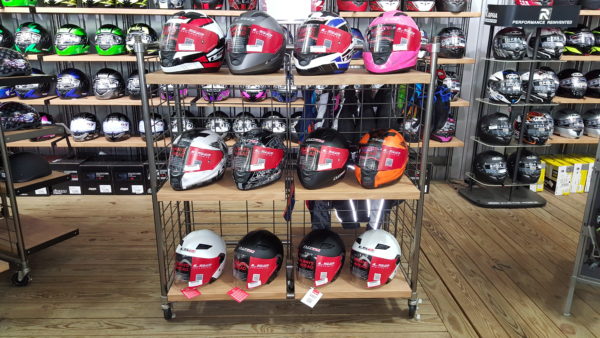Using store layout to encourage impulse buys
 Major retailers spend millions of dollars on design consultants to best facilitate the store space to boost sales and encourage impulse buys. The grocery store method involves the customer having to navigate past aisles of snacks in bright colored packages and distinctive end cap displays in order to achieve the reason for the customer’s visit — to buy a gallon of milk or carton of eggs. Most shoppers inevitably leave the store with more items than intended because carefully placed products caught the consumer’s attention. Like grocery stores and other retailers, many powersports dealerships follow suit by placing rows of shiny new motorcycle units and accessories along the path to the parts or service counter in an effort to entice sales to customers entering the dealership for spark plugs or an oil change. After all, putting a hot new vehicle front and center to grab customer attention is a great idea.
Major retailers spend millions of dollars on design consultants to best facilitate the store space to boost sales and encourage impulse buys. The grocery store method involves the customer having to navigate past aisles of snacks in bright colored packages and distinctive end cap displays in order to achieve the reason for the customer’s visit — to buy a gallon of milk or carton of eggs. Most shoppers inevitably leave the store with more items than intended because carefully placed products caught the consumer’s attention. Like grocery stores and other retailers, many powersports dealerships follow suit by placing rows of shiny new motorcycle units and accessories along the path to the parts or service counter in an effort to entice sales to customers entering the dealership for spark plugs or an oil change. After all, putting a hot new vehicle front and center to grab customer attention is a great idea.

Psychological studies have been conducted examining how people react when entering a store. Researchers have concluded that the majority of people look to the left while walking through the door, but then focus attention to the right. Therefore, the products displayed on the right side of the entryway should be reserved for the items a store wants to feature. If a store has different paths to the parts/service area, the one to the right will be most traveled as customers tend to walk through stores in a counter-clockwise direction. Additionally, in order to keep the customer view wide open, place lower height items toward the edge of the aisle and taller products like UTVs, side-by-sides, and large displays behind these items.

As much as businesses love new customers, the fact remains that most of the floor traffic to the parts/service counter is composed of a core group of returning customers buying maintenance items for existing vehicles. Even if these folks are not enticed by a shiny new unit on the pathway, an ever changing mix of accessories each season can certainly encourage impulse buys. One sales goal should be to get customers to leave the shop with something in addition to the intended reason for the visit. If customers are met with the same tired old displays and the unchanged merchandise during every visit, potential sales will be diverted by a lack of attention. Thus, give customers something new to ponder – spark curiosity and intrigue.
Moreover, at least once per quarter, shops should highlight seasonal items by changing up displays. Some dealers have invested in displays with wheels that can be easily moved around to allow seasonal best sellers to be placed at the front of the customer walkway. Even though working with heavy displays or fixed racks can be difficult, the results of re-arranging products on a quarterly (or more often) basis are worth the effort. Finally, end caps are considered prime real estate in a grocery , and these areas in a Powersports shop are a key area to highlight the best impulse items.

In closing, learn from the investments made by big box retailers and be sure to pay attention to store layout and continual transformations made by seasonal items and displays the next time visiting a successful business. These businesses have spent millions on consultants – pay attention to what is being done and incorporate some of those ideas into your own business to help increase sales and profits for your dealership.
Scott Hochmuth is the owner of Real Performance Marketing, an Atlanta-based company representing ten different Powersports related product lines in the Alabama, Florida, Georgia, and Tennessee areas. He comes face-to-face with over 200 dealers every 8 weeks. He has been in sales since 1982 and started in the powersports industry in 1989 as a sales representative for a helmet manufacturer.








